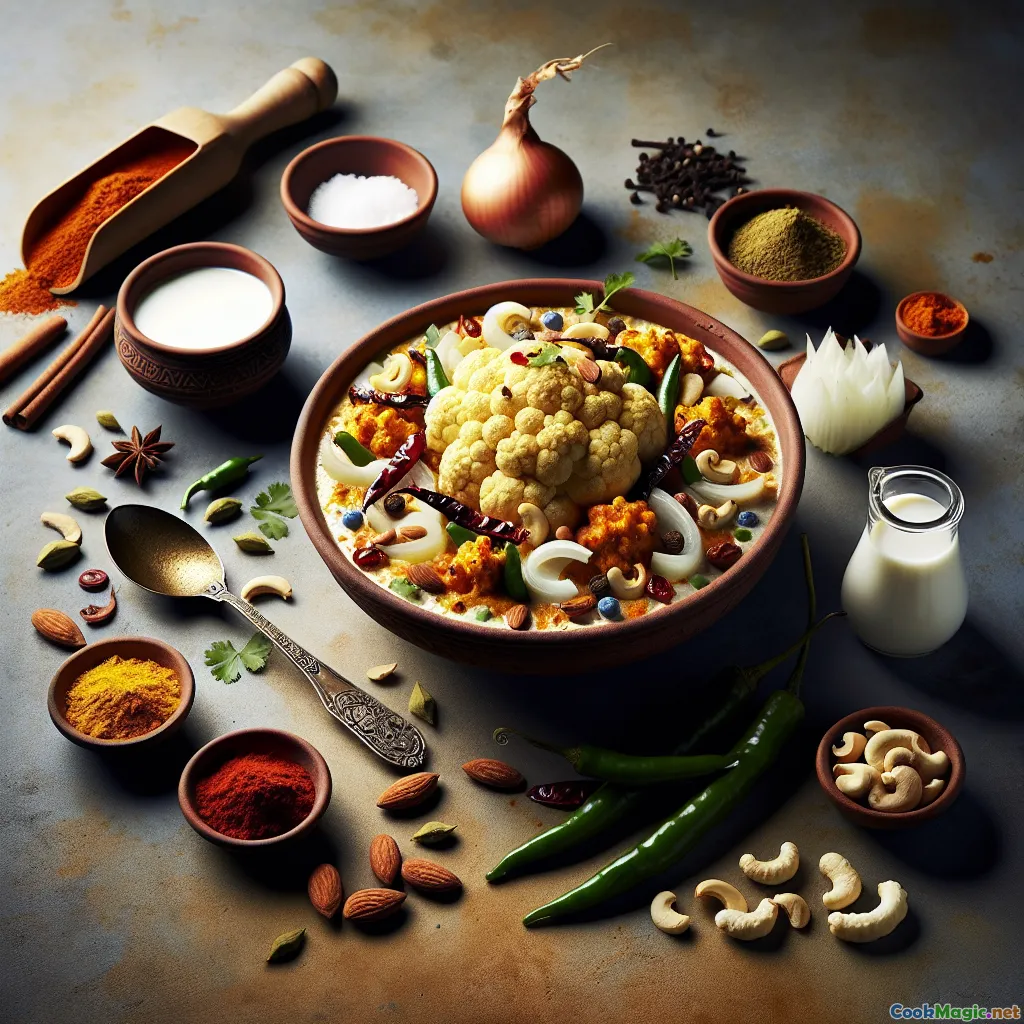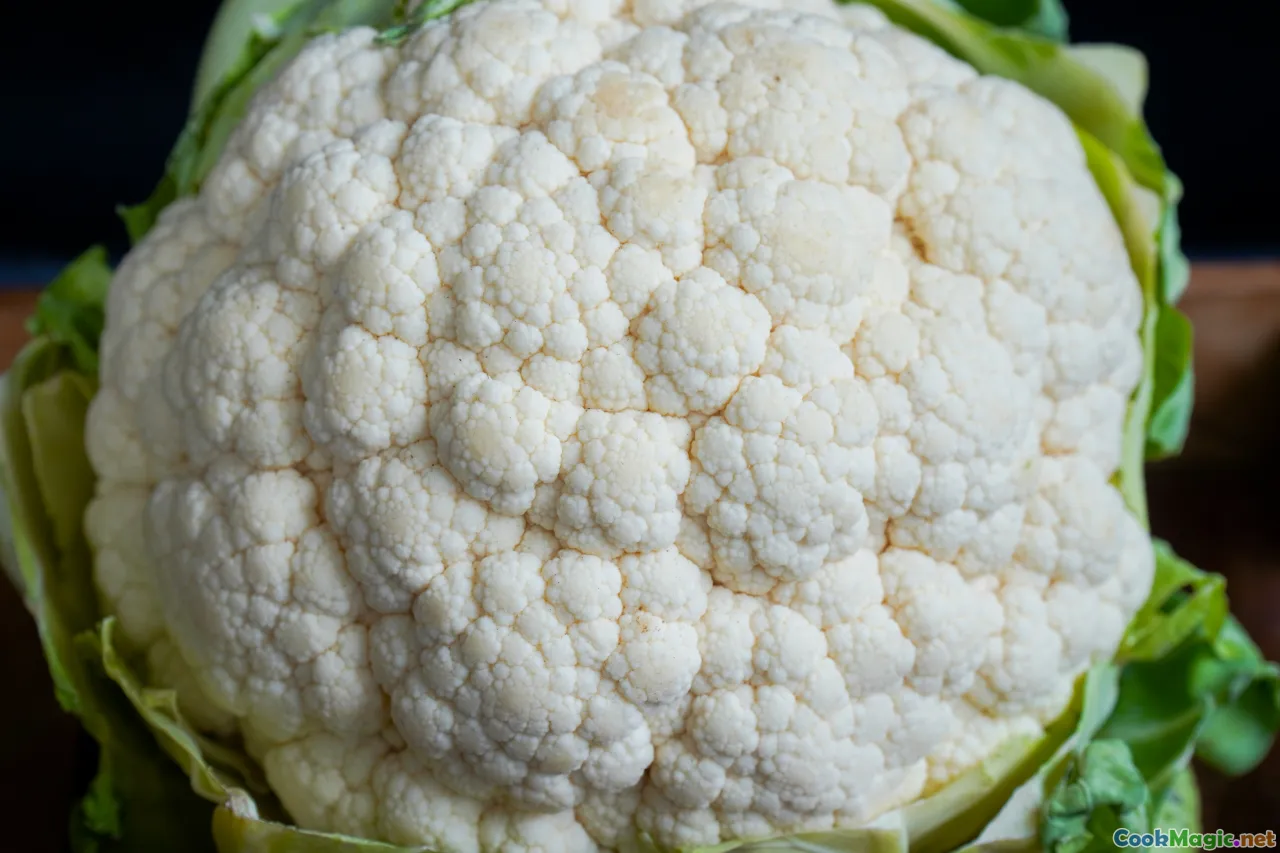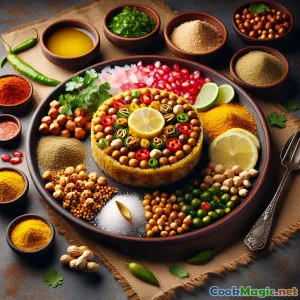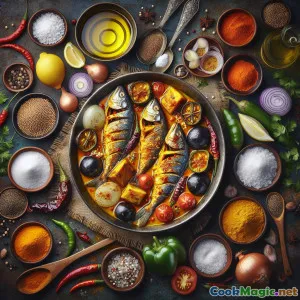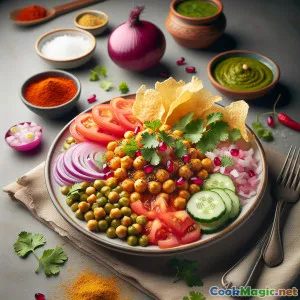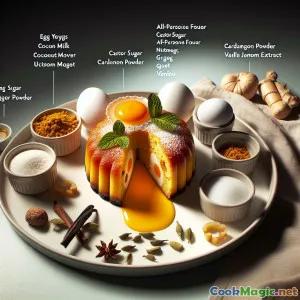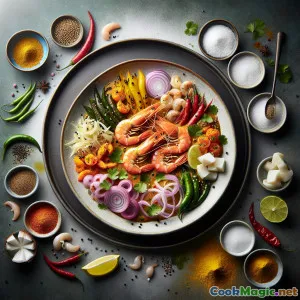
Hương Vị Đậm Đà của Awadhi Dum Phool: Món Súp Bông Cải Khách Mời của Mughlai
(Flavorful Awadhi Dum Phool: Mughlai Cauliflower Delight)
(0 Đánh giá)0
814
tháng 7 18, 2025
Báo cáo sự cố
Nguyên liệu
-
1 head Bông cải trắng (to, nguyên, đã cắt tỉa)
(Chọn những bông hoa tươi, chắc và kín.)
-
200 grams Sữa chua (đặc)
(Sữa chua treo cho kết cấu tốt nhất)
-
3 tbsp Bơ Ghee
(Có thể thay thế bằng dầu thực vật)
-
2 medium Hành tây
(Cắt mỏng)
-
1.5 tbsp Hạt điều
(Đã ngâm trong 10 phút)
-
1 tbsp Hạnh nhân
(Chần chín và bóc vỏ)
-
2 pieces Ớt xanh
(Khía, điều chỉnh theo mức độ cay)
-
1.5 tbsp Mì chính gừng-tỏi
-
3 pieces Quả thảo quả
(Nghiền nhẹ)
-
4 pieces đinh hương
-
1 inch Que hương
-
6 pieces Hạt tiêu đen
-
0.5 tsp Bột Nghệ
-
1 tsp Bột ớt đỏ
-
2 tsp Bột ngò rí
-
1 tsp Garam masala
-
3 tbsp Kem tươi
(Để tăng độ béo)
-
50 ml Sữa
(Xay các loại hạt và điều chỉnh độ đặc của nước xốt thịt.)
-
7 pieces Nhụy Saffron
(Ngâm trong 1 muỗng canh sữa ấm)
-
1 tsp Cánh hoa hồng khô
(Dành cho hương thơm và trang trí)
-
1.5 tsp Muối
(Theo khẩu vị)
-
2 tbsp Lá ngò rí
(Băm nhỏ để trang trí)
-
2 tbsp Hành tây chiên
(Tùy chọn, để xếp lớp và trang trí sủi cảo.)
(Chọn những bông hoa tươi, chắc và kín.)
(Sữa chua treo cho kết cấu tốt nhất)
(Có thể thay thế bằng dầu thực vật)
(Cắt mỏng)
(Đã ngâm trong 10 phút)
(Chần chín và bóc vỏ)
(Khía, điều chỉnh theo mức độ cay)
(Nghiền nhẹ)
(Để tăng độ béo)
(Xay các loại hạt và điều chỉnh độ đặc của nước xốt thịt.)
(Ngâm trong 1 muỗng canh sữa ấm)
(Dành cho hương thơm và trang trí)
(Theo khẩu vị)
(Băm nhỏ để trang trí)
(Tùy chọn, để xếp lớp và trang trí sủi cảo.)
Dinh dưỡng
- Khẩu phần: 4
- Kích thước khẩu phần: 1 đĩa (250g)
- Calories: 390 kcal
- Carbohydrates: 0 g
- Protein: 11 g
- Fat: 22 g
- Fiber: 7 g
- Sugar: 8 g
- Sodium: 820 mg
- Cholesterol: 25 mg
- Calcium: 160 mg
- Iron: 2.4 mg
Hướng dẫn
-
1 - Chuẩn bị súp lơ trắng:
Cắt bỏ lá khỏi súp lơ, giữ cho các bông hoa nguyên vẹn. Quét ghee lên và chần sơ trong nước sôi có muối trong 2 phút. Vắt ráo nước và để sang một bên.
-
2 - Chuẩn bị paste hạt:
Trộn hạt điều ngâm mềm, hạnh nhân chần qua và 50 ml sữa cho đến khi thành một hỗn hợp mịn. Thêm nước nếu cần.
-
3 - Xào Hành Gia Vị:
Làm nóng phần ghee còn lại trong chảo sâu. Thêm thảo quả, đinh hương, quế, hạt tiêu đen và hành tây thái lát. Xào cho hành tây vàng nâu.
-
4 - Làm nước sốt thịt:
Xào với paste gừng-tỏi và ớt xanh tỉa đôi. Nấu khoảng 2 phút. Thêm paste hạt, nấu cho đến khi chất béo được tiết ra. Thêm nghệ vàng, ớt đỏ, bột ngò rí, muối. Trộn đều.
-
5 - Trộn vào các sản phẩm từ sữa:
Đánh bông sữa chua để loại bỏ các cục vón. Hạ nhỏ lửa, từ từ thêm sữa chua khi khuấy. Sau đó cho kem tươi vào. Nấu cho nước sốt đặc lại và toả hương.
-
6 - Ướp và để sang một bên:
Tẩm hoa súp lơ với nước sốt đã chuẩn bị. Đặt vào chảo đáy dày. Phủ lên trên bằng garam masala, sữa nghệ tây và hành phi để tăng thêm hương vị (tuỳ chọn).
-
7 - Dum nấu kín (đậy kín và nấu chậm):
Niêm phong nồi bằng nắp kín hoặc bằng bột nhào. Nấu ở lửa nhỏ (dum) trong 30–35 phút cho đến khi hương vị ngấm vào và súp-lơ trắng mềm, thỉnh thoảng phết nước sốt.
-
8 - Trang trí và trình bày:
Mở nắp chảo, để nghỉ vài phút. Trang trí bằng cánh hoa hồng, ngò rí băm nhuyễn, kem thêm và hành phi. Dọn khi còn nóng, ăn kèm với cơm nghệ tây hoặc naan.
Cắt bỏ lá khỏi súp lơ, giữ cho các bông hoa nguyên vẹn. Quét ghee lên và chần sơ trong nước sôi có muối trong 2 phút. Vắt ráo nước và để sang một bên.
Trộn hạt điều ngâm mềm, hạnh nhân chần qua và 50 ml sữa cho đến khi thành một hỗn hợp mịn. Thêm nước nếu cần.
Làm nóng phần ghee còn lại trong chảo sâu. Thêm thảo quả, đinh hương, quế, hạt tiêu đen và hành tây thái lát. Xào cho hành tây vàng nâu.
Xào với paste gừng-tỏi và ớt xanh tỉa đôi. Nấu khoảng 2 phút. Thêm paste hạt, nấu cho đến khi chất béo được tiết ra. Thêm nghệ vàng, ớt đỏ, bột ngò rí, muối. Trộn đều.
Đánh bông sữa chua để loại bỏ các cục vón. Hạ nhỏ lửa, từ từ thêm sữa chua khi khuấy. Sau đó cho kem tươi vào. Nấu cho nước sốt đặc lại và toả hương.
Tẩm hoa súp lơ với nước sốt đã chuẩn bị. Đặt vào chảo đáy dày. Phủ lên trên bằng garam masala, sữa nghệ tây và hành phi để tăng thêm hương vị (tuỳ chọn).
Niêm phong nồi bằng nắp kín hoặc bằng bột nhào. Nấu ở lửa nhỏ (dum) trong 30–35 phút cho đến khi hương vị ngấm vào và súp-lơ trắng mềm, thỉnh thoảng phết nước sốt.
Mở nắp chảo, để nghỉ vài phút. Trang trí bằng cánh hoa hồng, ngò rí băm nhuyễn, kem thêm và hành phi. Dọn khi còn nóng, ăn kèm với cơm nghệ tây hoặc naan.
Thông tin thêm về: Hương Vị Đậm Đà của Awadhi Dum Phool: Món Súp Bông Cải Khách Mời của Mughlai
The Rich Story and Love for 'Awadhi Dum Phool'
‘Awadhi Dum Phool’ is a vibrant culinary celebration at the crossroads of Indian vegetarian luxury and sophisticated Mughal-era cooking. Centered on whole cauliflower or 'phool gobhi,' the name pays tribute to the epicurean traditions of Awadh (present-day Lucknow), an erstwhile kingdom famed for its Nawabi grandeur, progressive gastronomy, and, notably, its prowess with the slow 'dum' (sealed steam) cooking technique.
Inspiration & Uniqueness
In North Indian cuisine, cauliflower mostly stars as a weekday sabzi, actingly humbly in everyday curries, parathas, or as a crisp fry. This recipe reimagines cauliflower in its most regal avatar: gently blanched, bathed in a lush korma-inspired sauce made of nuts, aromatics, fragrant yoghurt, and finished beautifully with saffron and edible rose petals. The transformation from a simple vegetable to an indulgent centerpiece embodies Awadhi cuisine’s knack for elevating humble ingredients with intricate cooking methods and layered flavors.
The ‘dum’ process, where food is slow-cooked in a sealed vessel, was introduced by the Nawabs. This culinary finesse is believed to trap aromatics and moisture, yielding dishes that are more fragrant, juicier, and elegantly seasoned. Here, 'Awadhi Dum Phool' echoes the slow-cooked kakori, nihari, or veg-based navratan korma, but with a modern, celebratory vegetarian twist.
Cultural and Personal Notes
Historically, such dishes graced special occasions in royal households—weddings, grand iftaars, or Diwali feasts—meant to impress and satiate with both aroma and grandeur. Cauliflower, seasoned in rich nut-yogurt-cream gravy, signals opulence without the intricacies or heaviness of meat, making it accessible to a modern, globe-trotting, and health-conscious audience. It’s a reflection of India’s love for combining Mughlai principles with vegetarian innovation and remains a stunner on festival or dinner party menus.
What especially marks this recipe as unique is its presentation—serving the whole cauliflower, bathed in a thick golden sauce, as a centerpiece evoking wow-factor and a sense of occasion. The crunch of fried onions, fragrance of saffron, and sweetness of nuts offer inviting contrasts in bite and flavor dimension.
Tips for Perfect Results
- For best results, select a fresh, tight cauliflower head. Blanching helps retain its subtle bite and remove rawness.
- Whisk yogurt till smooth and always lower the burner before mixing it into the masala—the secret to avoiding splits or a grainy gravy texture.
- Fried onions and rose petals are not just decorative but subtly enhance sweetness and aroma, offering a nod to the Abadari style of layering—typical in Awadhi cooking.
- Sealing with dough (wheat flour and water) instead of just a lid increases the dum effect and infuses a distinct dum aroma; if you lack time, a tightly wrapped foil beneath a heavy lid works too.
- Cooking on very low heat is crucial—while it may test your patience, it rewards with juiciness and showcases the true strength of the 'dum' method.
Pairings, Variations & Suggestions
Serve ‘Awadhi Dum Phool’ as the luxurious centerpiece with fragrant saffron pulao, taftaan, or soft, charred naan. For added depth, swap standard nuts for pistachios. For vegan variation, use coconut or cashew yogurt and almond/sunflower-cream. Include any seasonal vegetables for color.
Whether you are evoking Nawabi splendor at home or just treating family to new flavors, this dish applauds the subtle but powerful layering of spices, textures, and culinary imagination—sometimes, a simple ‘phool’ can become truly fit for royalty.
